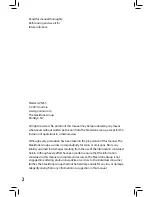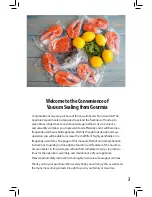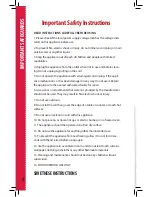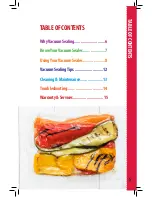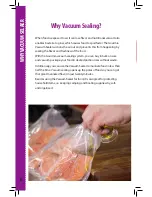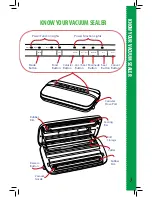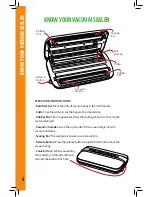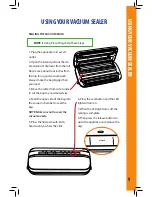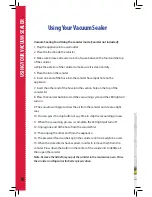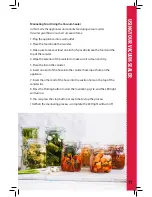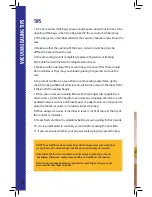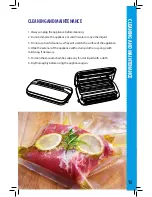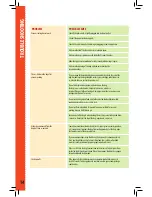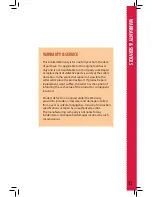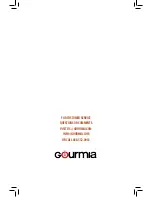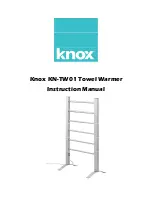
12
VA
CUUM
SEALING TIPS
TIPS
1. Do not overcrowd the bags. Leave enough space, about four inches, at the
opening of the bag so that it can be placed in the vacuum chamber easily.
2. If the bag is too small, fluid will enter the vacuum chamber and will ruin the
seal.
3. Make sure that the opening of the bag is not wet. A wet bag may be
difficult to heat and ruin the seal.
4. Vacuum sealing cannot completely replace refrigeration or freezing.
Perishable foods still need to be refrigerated or frozen.
5. Make sure the opening of the vacuum bag is clean and flat. There should
be no wrinkles as they may cause leaking during the process and ruin the
seal.
6. To prevent wrinkles in a seal when vacuum sealing bulky items, gently
stretch the bag to flatten it while inserting it into the vacuum chamber. Hold
it there until the sealing begins.
7. When you are vacuum sealing items with sharp edges (dry spaghetti, sil-
verware, etc.), protect the bag from punctures by wrapping the item in a soft
padded material, such as parchment paper or paper towels. You may need to
place the food in a canister or container instead of a bag.
8. When using accessories, remember to leave (1-inch) of space at the top of
the canister or container.
9. Freeze fruits and blanch vegetables before vacuum sealing for best results.
10 . It is recommended to wait forty seconds before sealing the next item.
11. If you are unsure whether your bag was sealed properly, reseal the bag.
NOTE: To avoid illness, do not reuse bags after storing raw meats, raw fish or
greasy foods. Do not reuse bags that have been microwaved or cooked.
Note: Allow hot foods to cool down to room temperature before vacuum
packaging. Otherwise, contents may bubble and spill from the canister.
Note: Do not vacuum package carbonated or sparkling beverages, as gas
removal will cause them to go flat.


